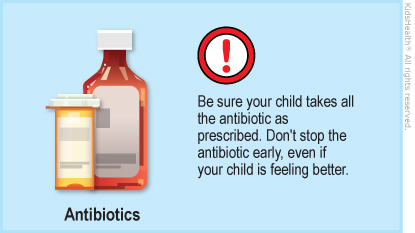Cellulitis (sel-yuh-LY-tus) is a deep bacterial infection of the skin and the area just under it. It can happen anywhere on the body. Kids with cellulitis need treatment with antibiotics to kill the harmful germs. It can take a week or more to get completely better. Follow these instructions to care for your child at home.



Your child:


What causes cellulitis? Many different types of bacteria can cause cellulitis. Cellulitis usually starts when bacteria get into a cut or scratch in the skin. Germs also can enter the skin at an insect bite, near a surgical incision, or at a piercing. The infection begins in the outer skin layers and spreads deeper, causing pain, swelling/puffiness, warmth, and redness.
Can cellulitis spread to other people? Cellulitis usually does not spread to other people. If fluid or pus oozes from an infection, cover the infected area with gauze or a bandage. Always wash your hands after touching the area or changing the bandage.
Can cellulitis be prevented? Keeping cuts and scrapes clean can help prevent cellulitis. Wash the injured area well with soap and water, apply an antibiotic ointment, and cover with gauze or a bandage. Try not to touch or scratch cuts, scrapes, or insect bites.